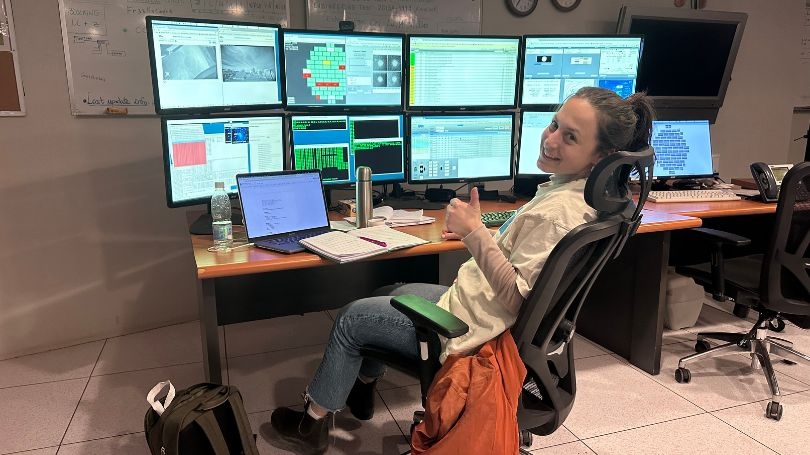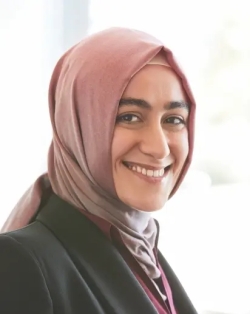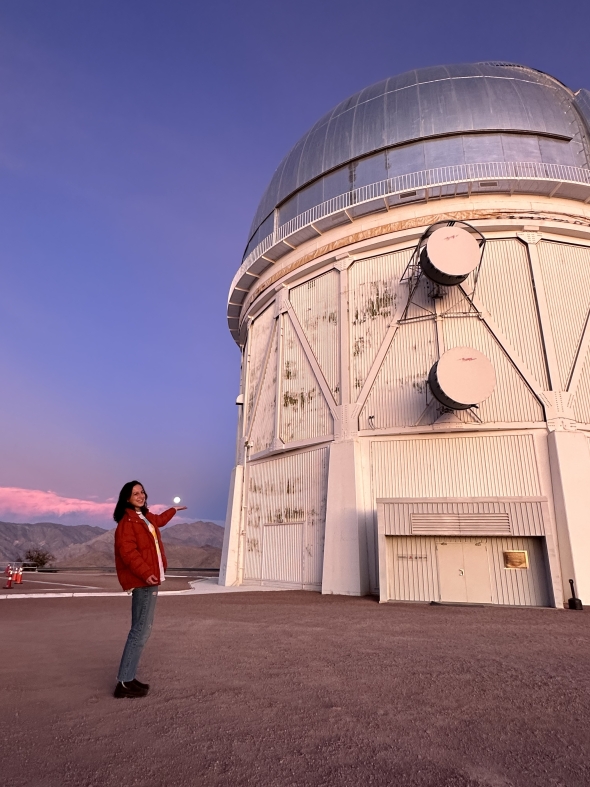

Ella Marin '25 received training on a world-class telescope in Chile as part of her research collaboration with Assistant Professor of Physics and Astronomy Burçin Mutlu-Pakdil.
In May, Ella Marin '25 received training on a world-class telescope in Chile.
The Víctor M. Blanco 4-Meter Telescope, also known as the Blanco 4m, is located at Chile's Cerro Tololo Inter-American Observatory, a complex of astronomical telescopes and instruments approximately 310 miles north of Santiago at an altitude of about 7,200 feet. The Blanco 4m was the largest optical telescope in the Southern Hemisphere from 1976 to 1998.

Marin took advantage of the opportunity through her research with Assistant Professor of Physics and Astronomy Burçin Mutlu-Pakdil, who is a leading member of the DECam Local Volume Exploration Survey. The multi-institutional collaboration seeks to "map a big portion of the sky with this telescope," Mutlu-Pakdil explains.
"Our specific focus is on discovering the faintest galaxies in the universe," says Marin, who worked with the telescope remotely in previous terms under Mutlu-Pakdil's guidance.
"Witnessing live images collected from this world-class telescope was truly amazing," Marin says. "The telescope is able to collect light from millions of light years away, which means the images I saw are from an earlier time in the universe. It feels like a type of time travel. To have this experience in person was both beautiful and absolutely mind-blowing. Understanding the secrets of the early universe is why I first became interested in astronomy."
img_3231.jpeg

The onsite training will enable Marin to serve as a lead observer on the international sky-mapping project. Throughout the year, each member of the survey group is allocated specified nights to use the telescope. As a lead observer, Marin will log in remotely during the time of sunset at the telescope, send in the observation schedule, and then direct and manage the night's observations until sunrise.
The training gave Marin a deeper understanding of the technical subtleties of observation.
"Many people enter this field with no real concept of how telescopes work or how the data they are working on is retrieved," Marin says. "After seeing the observatory for myself, I gained a greater appreciation for the process and how things like the brightness of the moon and clouds can greatly affect the ability to observe."
Marin discovered that it's important to watch the weather and monitor conditions that could alter which observations are happening that night. "Some are more optimal under certain conditions," she says. "It is also important to keep track of certain measurements to make sure the telescope is functioning properly. Metrics like star ellipticity—which tells you how round the star is—can indicate whether or not the telescope is functioning as it should."
In addition to enjoying the scenery in the southern Atacama desert and staying at the famous observatory, Marin met and worked with astronomers from Spain, Venezuela, and Chile and learned more about careers in astronomy. She also finished up her Spanish study abroad term.
"Spanish was the common language amongst the group," she says, "and I was very excited to blend my two interests and practice Spanish in the observing room."